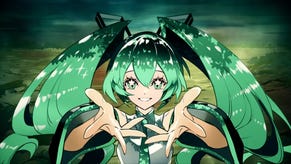8 best planes in the Magic: The Gathering multiverse
These planes were made for walking.
No collectible card game has been as durable as Magic: The Gathering. 28 years and still going strong! Though the community has always had doom-mongers predicting its imminent collapse, thus far it’s shown no sign of fading.
That could be down to the ruleset, business model or the passion of fans. But no doubt one of the reasons for Magic: The Gathering’s resilience is the ingenious decision to set the game in a multiverse, with countless worlds (or planes) to discover.
Best MTG planes
Being set across potentially unlimited universes allows MTG to explore any trope or idea it chooses and have literally world-shattering stakes, without having to worry overly much about what came before. It also keeps things fresh, changing, constantly renewed. If one setting doesn’t land with the audience, we just jump away to something else, always with the option to come back another time and try again with a new approach.
Over the decades we’ve been to tons of interesting planes and seen some extreme things happen to them. MTG planes have been born, blown up or even used as a staging ground for an invasion and then crashed into another like a superweapon - er, just as an example. Some have been one-offs, others fan-favourites we revisit time and time again. Here are eight of the best.
1. Lorwyn/Shadowmoor
Don’t feed them after midnight

The stories we commonly tell children have extreme potential for creepiness. You know this; I know this; we’ve all seen Pan’s Labyrinth. Lorwyn and Shadowmoor - one plane with two names - explores the dual-nature of fairy tales, with a world that flips every 300 years from a whimsical land of boggarts, giants and kithkin, all living together in Shire-like harmony, to a dark reflection of its former self, filled with fear and conflict.
Lorwyn/Shadowmoor gains uniqueness points for being one of the only Magic: The Gathering planes without humans - a choice that allows the fantasy creatures and cultures of the plane to be explored in greater detail. From goat-napping goblins to paranoid kithkin, they’re injected with a ton of personality. The “Great Aurora” transformation event that turned dreamland to nightmare was also extremely intriguing, and it was fun to see how the characters and creatures we’d gotten to know in Lorwyn were twisted and warped in the transition to Shadowmoor.
2. Kamigawa
An underrated gem

Kamigawa is a plane based on Japanese culture. As you might expect, it has its fair share of skulking ninjas and mighty samurai, but it’s particularly elevated by some of the strangest and most experimental creatures in Magic: The Gathering’s history: the kami spirits.
Intended to look as though they didn’t belong in the natural world, MTG’s artists pushed the boat out for the kami, delivering some wonderfully abstract creations. Just take a look at this floating horned radish thing, the Kami of the Honored Dead. It’s unlike anything the game has produced before or since.
Unfortunately, though it certainly has given the plane a cult following, the design of the kami creatures may have been a tad too bizarre for much of Magic’s audience. Worse, the Kamigawa block was hampered by being extremely weak mechanically. The sets were a major flop, making a return to the plane less than likely.
3. Innistrad
This is Halloween

Magic: The Gathering loves to take well-known tropes and put its own twist on them, but in Innistrad the twist is relatively minor. Put simply: it’s the horror plane. The design team clearly had a lot of fun coming up with their own fantasy takes on classic characters such as The Invisible Man, Frankenstein’s monster and even Kafka’s Metamorphosis for this world. And in our second visit, the Shadows Over Innistrad block, things got even worse for the Average Joe Innistradian; the plane pivoted from Gothic to Lovecraftian horror with the invasion of the Eldrazi, betentacled villains so iconic that every single new set inspires fresh theories about their imminent return.
A relatively young plane, Innistrad’s resonance with fans is evidenced by the fact that we’ve been there twice already and are due for not just one but two sets on the plane this autumn: one heavily featuring vampires, the other werewolves. We’re all thinking it: is this finally the Magic: The Gathering X Twilight crossover we’ve been clamouring for?
4. Ravnica
Big city living

Ravnica is a city that spans an entire plane, trading the very concept of a natural world for excellent urban planning and a skyline that produces lovely postcards. One of the most popular planes in the game, Ravnica is most notable for its 10 guilds - one for each colour pair in MTG. From the wealth-obsessed undead of Orzhov to the mad scientists of Izzet, each one has a strong identity. So strong, in fact, that their names have become synonymous with the colour pairs they represent.
Ravnica has received a lot of love over the years; most recently, it was the chosen locale for the showdown with one of MTG’s most prominent “big bads”, Nicol Bolas, and we’re sure to see more of it in the future.
5. Amonkhet
Exodus-troyed

Magic: The Gathering has had three goes now at creating its own fantasy spins on real-world historical cultures and religions: Norse, Ancient Greek and Ancient Egyptian. It’s done a competent job each time, and in Amonkhet all the classic Egyptian tropes jump out: pyramids, sphinxes, mummified cats and animal-headed deities.
The reason Amonkhet stands above the other two is it’s not played straight. Indeed, by the time we got to see the plane, its entire cultural system had been co-opted and manipulated by the aforementioned Nicky B in a scheme that ultimately culminated in an apocalypse and the deaths of four out of its five gods. A very bad day all round.
As well as its destruction serving as an example of the ridiculous power MTG’s planeswalkers can throw around, Amonkhet is also in a really interesting spot right now; with its status-quo destroyed and pantheon decimated, its story could go pretty much anywhere.
6. Zendikar
Kor, would you look at those ruins!

Zendikar came out of the gate as MTG’s adventure plane, filled with dungeons to explore and hidden wealth to obtain. It’s just plane (ho ho) cool. After the Eldrazi showed up, it was also home to Magic’s Avengers Assemble moment, with powerful planeswalkers forming the Gatewatch to ensure nothing bad happens in the multiverse ever again. They fail pretty spectacularly at this, it must be said.
As well as its story significance, Zendikar is visually interesting at the moment, with, as of the 2020 Zendikar Rising set, a bunch of floating bits of terrain for its adventurers to clamber over - it’s certainly the plane of choice if you’re really into abseiling. It also has the added wrinkle of the Roil, a kind of constant earthquake that prevents manmade settlements from being constructed, making the plane a sort of anti-Ravnica, if you will. All in all, it’s a very solid MTG plane, though it’s never quite been able to recapture the magic that came with our first visit.
7. Mirrodin
A plane you’ll really take a shine to

In its early days, MTG had far more sci-fi leanings, but even then Mirrodin was a bit of a step change. An artificial world where everything is made of metal - metal rocks, metal trees, metal fields, metal cornflakes - it made for some truly spectacular landscapes, but you wouldn’t want to walk around barefoot.
You may have gathered by now, but a lot of Magic: the Gathering’s planes have had quite a rough time of it. Indeed there was worse in store for Mirrodin’s denizens than splintered teeth over breakfast. First the plane’s ruler, Memnarch, decided to abduct a bunch of fleshy people from regular worlds, who had about as miserable a time as you’d expect. Then the plane was entirely corrupted by Phyrexians in a process called compleation, which makes you a) a robot and b) totes evil. Bummer.
8. Dominaria
Jeez Dominaria, how come Wizards let you have 30 sets?

Y’know how in Star Wars all the planets are just one thing? Hoth is the ice planet, Endor’s the teddy bear picnic planet and so on? Well, most Magic: The Gathering planes are a little bit like that - they have one or two central ideas, often very strong concepts that can fuel multiple plots and revisits, but that’s all there really is to them. Dominaria is the major exception to the rule. It brings an embarrassment of riches to the table: several continents, a whole lot of fully developed cultures and countless characters vital to the overarching plot of the game.
That’s because it’s the original plane. Before Magic started its whistle-stop tour through the multiverse, about a decade was spent just on Dominaria, flitting around different eras and geography. In fact, it has such a storied past that the most recent set there, 2018’s self-titled Dominaria, was all about history. It’s been through numerous world-changing events (seriously, it’s had a lot thrown at it) and is home to so much that’s iconic about the game - everything from Yawgmoth to Slivers. A top-notch fantasy setting.











